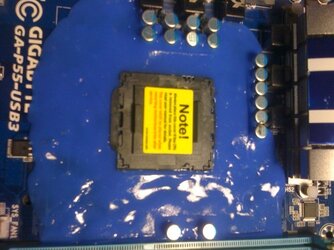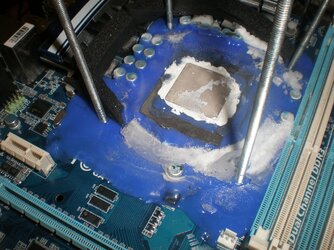- Joined
- Aug 10, 2010
- Location
- Sunshine State
I was browsing through some other OCing sites las nite.... 
And ran into this little thread: Alternative to kneaded eraser... They're using "Bionic Putty" which we know here in the US as Silly Putty...

About Silly Putty:
Silly Putty is a dilatant compound, a silicone based polymer that is highly elastic, exhibits high bounce, can be easily molded, yet can hold it shape while at rest. It is non-toxic and non-irritating to the skin.
Silly Putty was invented by James Wright, a researcher at General Electric who was working on synthetic rubber substitutes. The first Silly Putty substance was made by mixing silicone oil with boric acid. While the invention didn't have a future as a synthetic rubber, it did make a great toy.
From the looks on the pictures over at Benchtec; I would say this stuff would be a breeze to apply... just drop a nice amount of it around the socket and let it flow into every nook and cranny...
Thoughts?
PS: On a "lighter" note... Please visit this section of the Silly Putty site and tell me what in the world were the people in charge of the site's design thinking about when they came up with that picture?
And ran into this little thread: Alternative to kneaded eraser... They're using "Bionic Putty" which we know here in the US as Silly Putty...

About Silly Putty:
Silly Putty is a dilatant compound, a silicone based polymer that is highly elastic, exhibits high bounce, can be easily molded, yet can hold it shape while at rest. It is non-toxic and non-irritating to the skin.
Silly Putty was invented by James Wright, a researcher at General Electric who was working on synthetic rubber substitutes. The first Silly Putty substance was made by mixing silicone oil with boric acid. While the invention didn't have a future as a synthetic rubber, it did make a great toy.
From the looks on the pictures over at Benchtec; I would say this stuff would be a breeze to apply... just drop a nice amount of it around the socket and let it flow into every nook and cranny...
Thoughts?
PS: On a "lighter" note... Please visit this section of the Silly Putty site and tell me what in the world were the people in charge of the site's design thinking about when they came up with that picture?

Last edited:

